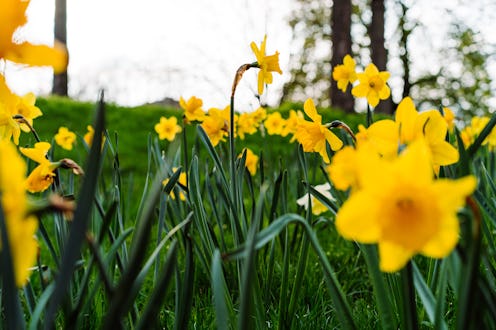Life
Google Can Now Alert You If Your Allergies Are Going To Be Extra Bad

It's coming to the end of summer, and for roughly 7.8 percent of the adult American population, that means the beginning of something awkward: the September hayfever season. Allergic rhinitis, as known scientifically, is highly common, but that doesn't stop it from making people's lives miserable. The good news is that tech companies have increasingly been stepping in to help. Google has recently partnered with Weather.com to create a pollen forecast that will help allergy sufferers track pollen and manage their symptoms, leading to a better allergy season for all.
The key to helping hayfever sufferers, short of a miracle cure, is prediction: knowing the airborne presence of particular allergens as plants emit pollen can be hugely helpful for managing symptoms medically or, if necessary, deciding to stay indoors. And as prediction systems by meteorologists become more refined, technology has decided to find different ways to bring that information into our homes. Google's new functionality is an attempt to help people predict their sensitivity in advance, and another example of how technology can help your health. Take an antihistamine and dive in.
The New Solution For Hayfever Sufferers
Google is banking on iPhone and Android users deciding to, well, Google their snuffle problems. Pollen tracking is a big part of helpful data for allergy sufferers, allowing them to avoid certain areas and take preventative measures when particular allergens are in the air. (As it happens, pollen grains in sediment are also fundamental to geographical history, because they're such a good indicator of the plants thriving at different points in time.)
Weather.com has been doing daily pollen counts and forecasts for many years, but by integrating this information with Google searches, it makes this information as accessible as directions to your nearest pharmacy. The new tool allows people to receive notifications when the pollen count in their area is particularly high, and shows relevant information automatically whenever someone searches on Google for allergy or pollen levels. It's a smooth move that shows how savvy Google is at knowing how people use its functions, but will it make a real difference to sneezing consumers?
Tech & The Pollen Problem
When it comes to the intersection between airborne allergens and techies class, allergy apps are common. Everybody from Clarityn to WebMD has specific apps for allergy sufferers, each taking a slightly different approach: Clarityn, obviously, integrates pollen maps and information with ideas about treatment and a symptom tracker, while WebMD sets up personal allergy profiles for multiple users on the same device and gives you information on everybody.
The real competition for Google's new tool is the most popular pollen app out there: Pollen.com's Allergy Alert. It's available on Android and iOS, and integrates 5-day forecasts, allergy diaries and an information section on every major botanical allergen around, from oak to cedar. The Google system, however, has it beat in one basic sense. While Pollen.com's version is called Allergy Alert, it actually has no built-in alert system — and the Google idea to notify people, if they choose, about incoming pollen problems sets it ahead of the pack. The Clarityn app offers this, but it's only available in the UK — not exactly helpful for stateside hayfever sufferers.
Elsewhere, technology is helping allergy sufferers in different ways. Academics in the UK have partnered with the Met Office to do the region's first hayfever map of botanical allergens, from oak to grass, to help severe sufferers know where to work, live and holiday (and those who are milder where to avoid). And new science has suggested that increased exposure to pollen types over three years, whether through pills or injections, has been shown to significantly improve hayfever outcomes. The Google option, though, may stand to make life a lot easier for people around the United States who view spring and autumn as a time of runny noses and misery.